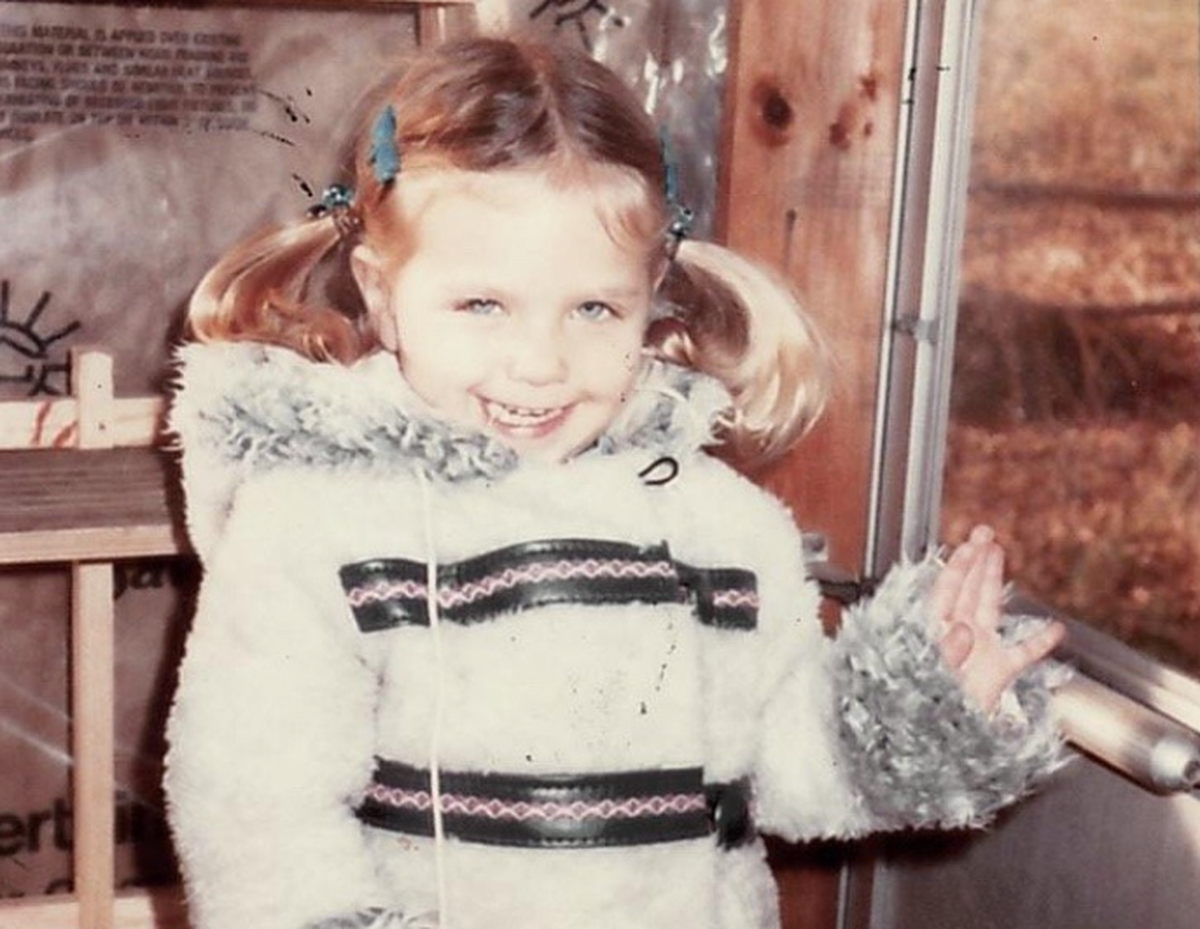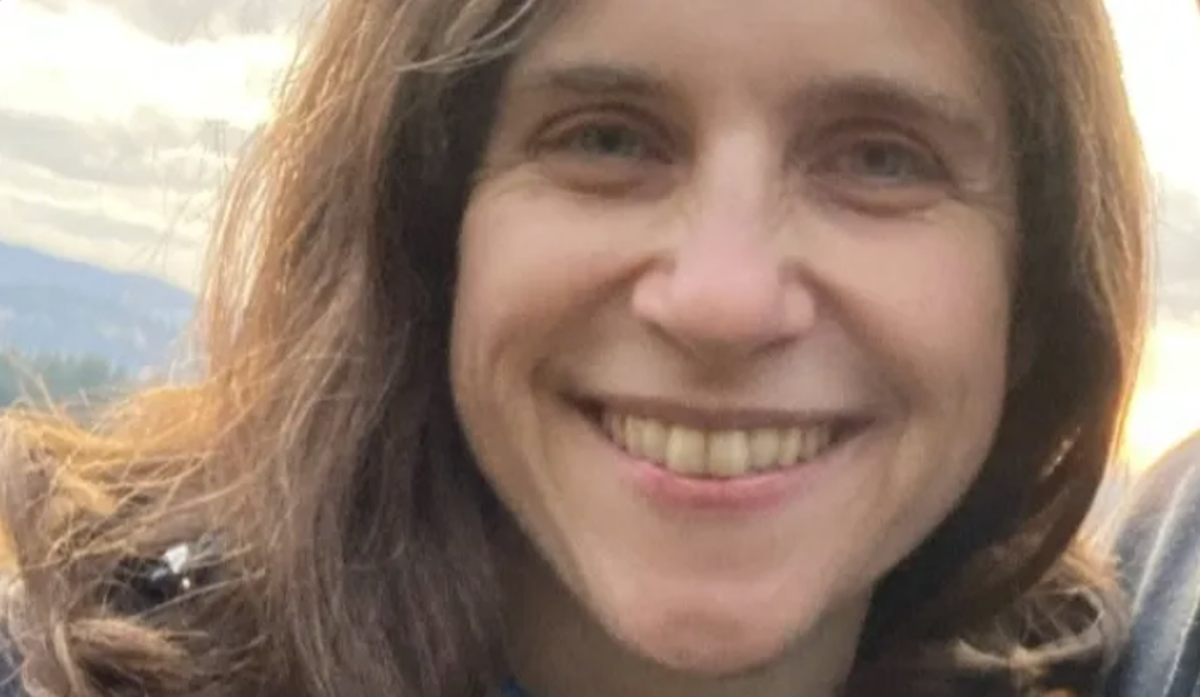The slow unraveling of a Missoula woman’s mind led her to death. She may only be one of many failed by a male-oriented mental health system
Eva Masin Prather (Courtesy of family)
On the night of Dec. 30, Eva Masin crawled out of bed, slipped out the back door of her home and disappeared into the freezing night.
The only trace she left was the soft imprints of her bare feet in the frost of the quiet Missoula alley. They were heading toward the Clark Fork River.
Masin’s husband, Dave Prather, sits in a well-worn chair in his living room, the long hair of his organic farming days trimmed to the docility of middle age. The bookshelves are stuffed with titles from botany manuals to Tom Robbins novels. A guitar hangs on the wall. The air smells of herbs and teas.
The last time Prather saw his wife, it appeared she was sleeping soundly. Yet in the weeks, days and hours prior to that, Masin, 43, who had recently been diagnosed with bipolar disorder, was struggling to mitigate a manic episode.
Masin was raised in North Idaho, home-schooled in a rural, natural setting. By all accounts, she was a vibrant and sweet child. Her parents were educated and intellectual, her mother a talented musician with a melodic voice and gardening skills that Masin inherited, along with her father’s analytical mind. She was drawn to plants and nature, studied at Evergreen in Washington, traveled to South America and Europe, and hiked much of the Northwest.
Masin pursued a career in forestry, becoming a writer and editor for the U.S. Forest Service. Her marriage to Prather, a soft-spoken man with equal gardening prowess, was the foundation of their idyllic family and the life they built near the Mission Mountains before moving to Missoula.
For much of that life, Masin was also one of my closest friends. Her soft laugh was the soundtrack to many of my youthful memories. In our letters and visits over the decades, there were few hints – a reference to anxiety, an admission that therapy was helping her cope better with stress, a propensity to feel depressed in winter.
Yet none of that explained why Masin would walk away from her home, husband and children in the middle of a winter night.
Prather has told the story in pragmatic detail more times than he can remember: to the police, to the search and rescue teams, to friends, family, and – in a delicate version – to their two young children. When he speaks, Prather pauses, scrunches his eyes as if he’s looking in the recesses of his mind for a missed clue, a visual memory veiled by shock or grief, some hint or explanation to the inexplicable.
Within hours of her disappearance, posters appeared everywhere in Missoula. The bright red letters of MISSING hovered somewhere below a smiling picture of Masin. The posters listed her height, weight, guesses at what she may be wearing and the possibility that Masin was suffering from a mental health crisis.
The term “mental health crisis” is vague and generally applies to a situation in which a person may be a risk to themselves or to others. In a culture of misused therapy language, where social media has become a hotbed of mental health influencers and self-diagnosis, the term is diluted into something that gives the reader perhaps a vague sense of pity. The urgency the phrase once warranted is lost on a society braced against the use of ever more dramatic language.
These crises, however, are serious, critical and, according to the National Institute of Health, increasing in their prevalence and disproportionately affecting women. Despite a rise in advocacy and open conversation in most forms of media, there remains widespread stigma and a lack of understanding about mental illness and its acute risks.
The systemic inequity of treatment and research when it comes to women, particularly those with mental illness, can also lead to delayed or inaccurate diagnosis, as well as ineffective pharmaceutical intervention. While men are less likely to seek treatment for mental health issues, women are 30-50% more likely to be misdiagnosed.
Joe Wassif, the Director of Behavioral Health at Kaniksu Community Health in Sandpoint, recognizes that unless a supportive network is present and involved, it can be difficult to get a complete picture of what a patient is experiencing.
“One of the challenges with diagnosing and treating mental illness,” Wassif said, “is that a doctor relies primarily on the patient for information.”
This isn’t to suggest patients intentionally withhold information, but they may normalize or be unaware of some symptoms. Wassif notes that the stigma and shame of mental illness, particularly for women, begins early in childhood, where girls are taught to not make a fuss, not draw attention to oneself.
Wassif’s statement was echoed, almost exactly, by Masin’s husband.
“She never wanted to draw attention away from the children or make the focus about her,” Prather said.
This was evident in her lifestyle and her generosity toward others. Her garden seemed mostly used to produce vegetables and seeds for friends. She was a patient and kind listener in conversations. She expressed gratitude for her husband and children while sharing family updates. She kept her own story to humble mention, regardless of the significance of an achievement or event.
Arguably, all of this seems normal if not condoned behavior for a woman. It leaves those of us who knew her wondering if there had been other signs. Had we missed or dismissed bizarre behavior as benign?
In our region, it is not unusual for people to discuss the impact of electromagnetic fields or a fear of government oversight, as Masin sometimes did. When she left social media, it aligned with the post-pandemic fatigue most of us had. There was the time in college when I visited and found her living in the forest, sleeping on a soggy sofa under a tarp. I assumed it was just poverty, a reality familiar to both of us at the time. Now I know it was depression.
Her close friend, Chelsea Pennick, noted that there had been a gradual shift in their friendship in recent years. The two had shared parallel lives since adolescence.
“I thought we were growing apart,” Pennick said. “Now I realize she was mostly talking about those out to get her, or colleagues who behaved suspiciously.”
The difference seemed subtle, like a trend toward egocentrism. It only became obvious when Pennick understood her friend was slowly being consumed by paranoia, detaching from one reality as another formed.
Masin had not openly shared her diagnosis of bipolar disorder until later. That diagnosis had been the result of a brief hospitalization due to what she described as anxiety, though Masin had actually experienced her first known manic episode. With the support of her husband and therapist, she agreed to in-patient treatment. For the years prior to that, her symptoms presented primarily as intermittent depression.
Like many women, she emerged from that incident with a determination and belief that she could, and should, manage her mental health. It was almost as if she felt she were to blame. She was reticent to further testing, concerned the label would impact her career. She exercised regularly, went to yoga, spent time in nature, took her vitamins.
In letters, she wrote of her “anxiety” as though this was just another responsibility of hers, like raising the children and staying thin and caring for her aging parents, plus managing a career, being a supportive wife, creative pursuits, art and gardening. In the myriad pressures of everyday life for the modern woman, this was one more she would handle with a measure of grace.
“Women are really good at taking care of everyone around us, but when it comes to these vulnerable times, we’re not giving ourselves the time and resources we need to take care of ourselves,” said Tabitha Barron, a Women’s Health Nurse Practitioner.
Masin was not alone in this. The National Institute of Mental Health reports that more than 26% of women have suffered from mental illness in the last year. Not surprisingly, the statistics for treatment, outcomes and mortality for women of color and minority groups are even more sobering.
This means it impacts at least 1 in 4 of our female friends, colleagues, sisters, mothers, daughters, wives and all the women in our society who are placed under inordinate demands, treated with implicit bias when seeking medical care, and often stigmatized into isolation.
It is perhaps the isolation that is the most dangerous.
“Women tend to do better when they have a village of other women going through the same thing,” Barron said.
For that to work, women need to be able to talk about what we are experiencing. And the rest of us need to listen.
There is good reason and ample historical evidence to understand why women may hide or minimize their mental health concerns. In the United States and elsewhere, we’ve had a habit of forcibly confining women with premenstrual syndrome to insane asylums. Early research suggested that electric shock therapy instigated amenorrhea (the lack of menstruation) in patients, which would presumably also mitigate the nuisance of PMS altogether.
After Masin’s first experience in the hospital, she explicitly expressed a desire to avoid future hospitalization. Being escorted from the emergency room to the psychiatric ward by armed officers felt traumatizing and humiliating. The side effects of medications prescribed were uncomfortable. She was mostly separated from her husband and children, relationships that were grounding and stabilizing to her.
The standard of care for these patients is not holistic in its approach, failing to consider or include further diagnostic tools. Genetic testing is available for many psychiatric medications to determine which are contraindicated for a patient or have potential for dangerous side effects. These tests are typically covered by insurance and Medicaid. Hormone levels can also be measured throughout the month to assess the impact on mood or medication efficacy, and to determine excess levels or imbalances.
While the volume of conversation in the field of women’s mental health is increasing, it is painstakingly slow and underfunded. Researchers and practitioners are just beginning to examine how hormones impact female mental health, particularly during peri-menopause.
“For women, the most vulnerable time for more significant symptoms are times of hormonal transition. Postpartum is the most significant, and then peri-menopause,” said Natasha Splaine-Talbot, a Psychiatric Mental Health Nurse Practitioner in North Idaho.
This is because hormone fluctuations can exacerbate symptoms, as well as impact how a medication is metabolized. Studies show that women with mental health diagnoses commonly suffer from more severe premenstrual symptoms.
New research also shows that these are often discounted, minimized or outright denied by their health care professionals. Women with severe mental health illness, such as bipolar disorder, are more commonly diagnosed with and treated for depression. And most of those treatments are based on research involving male cohorts.
This might help explain the medications Masin was prescribed: a low-dose combination of pharmaceuticals primarily to treat depression, anxiety and insomnia – symptoms that could be present with any condition ranging from motherhood to final exams to seasonal affective disorder to peri-menopause. It might also help explain, had we more of this much-needed research, why her most severe symptoms were not noticed until her 40s.
Yet it was the weeks prior to Masin’s disappearance that offer the most insight to her battle, and the extent of effort she took in trying to stabilize herself. They are documented meticulously on a pastel-colored graph used for tracking moods, symptoms and medications. She also noted herbal remedies she tried, what provided relief, how she slept. Masin’s marks spend nearly a month ascending in an ominous escalation of anxiety and paranoia. The last note is a long arrow pointing upward toward a red row labeled “significant impairment.”
The dangerous alchemy inside her continued for weeks with lessening periods of reprieve. She worried she was being targeted, had intrusive thoughts and feared being pursued. She wondered if whatever or whomever was following her might harm her family. She became convinced that files were being deleted from her computer, that tractors in yards were nefarious, that the HVAC repair crew was suspicious.
On the day before she disappeared, she alarmed a neighbor with concerning conversation, prompting a wellness check by the police, during which she appeared lucid and appropriate. Unaware of Masin’s history, they did not provide details of that talk to Prather. He had reached out to her therapist, discussing the possibility of hospitalization if her condition worsened.
But she seemed improved as the day went on. Most of their private conversations had been normal and rational. There was talk of possibly relocating to their farm near St. Ignatius, Montana, for a quieter life with the children. By evening, the house was calm and Masin said she was tired and tucking in early. After wrapping up some work, Prather crawled into bed next to his wife.
When he awoke the next morning, she was gone.
The community response in an effort to locate her was swift and broad, but it was too late.
Nearly 10 months later, her body was recovered from the Clark Fork River. Her wedding ring was nearby and returned to her husband.
While unanswered questions about her last actions and thoughts will remain, it is clear that her illness had taken command over her mind, despite how much she resisted. To write or think compassionately about those final moments, one must not speculate, but honor her privacy and dignity with the only truth we know: Eva Masin loved her family with all of her heart.



